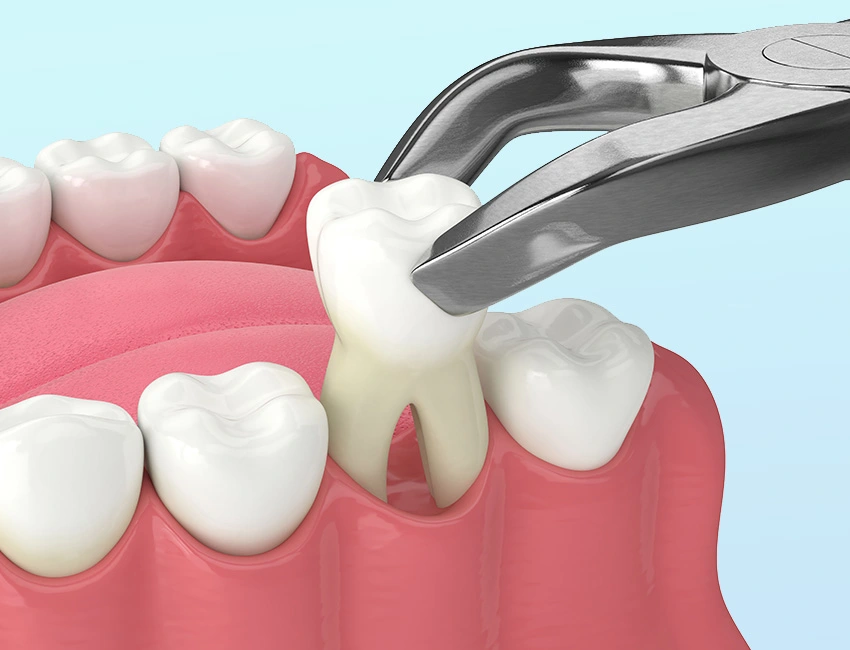When faced with dental pain, infection, or overcrowding, one of the most common recommendations patients receive is tooth extraction. While extractions can be essential in certain circumstances, they are not always the only—or even the best—option. With advancements in dental care and a greater emphasis on conservative treatment, many dental professionals now explore a range of alternatives before resorting to extractions. This article delves into when extractions are truly necessary, the viable alternatives, and the best practices that patients and dentists can adopt to preserve natural teeth whenever possible.
Understanding Extractions and Their Purpose
Extractions involve the complete removal of a tooth from its socket in the bone. They are commonly recommended in several scenarios, such as:
-
Severe tooth decay that cannot be restored
-
Advanced periodontal (gum) disease
-
Impacted wisdom teeth
-
Orthodontic treatment requiring space
-
Trauma or fractured teeth
-
Non-restorable infections or abscesses
In these cases, extractions can prevent further complications and alleviate significant discomfort. However, while they serve a vital role in dental health, extractions should not be the default approach without a thorough evaluation.
Are Extractions Always Necessary?
The answer is no—extractions are not always necessary. In many cases, modern dentistry offers solutions that can save the tooth and maintain oral health. Dentists today prioritize conservative treatments aimed at preserving the natural structure of the mouth, which contributes to better long-term outcomes in both function and aesthetics.
Natural teeth play a vital role in chewing, speaking, and maintaining jawbone integrity. Losing a tooth—even one in the back of the mouth—can lead to issues like shifting teeth, bone loss, and bite misalignment. Therefore, whenever possible, retaining the natural tooth is the preferred course of action.
Alternatives to Extractions
Several alternatives can be considered before moving forward with a tooth extraction. These include:
1. Root Canal Therapy
One of the most common alternatives to extractions is root canal treatment. This procedure is designed to treat infection or inflammation within the pulp of the tooth. By removing the damaged pulp, disinfecting the interior, and sealing the tooth, root canal therapy can save a severely decayed or infected tooth.
Root canals have a high success rate and allow patients to retain their natural teeth for many years, often with the help of a crown for added strength and protection.
2. Periodontal Treatments
For teeth compromised by gum disease, deep cleaning methods such as scaling and root planing can help restore gum health and prevent further deterioration. In more advanced cases, surgical interventions like flap surgery or bone grafting may be used to preserve the tooth and regenerate supporting bone and tissue.
3. Restorative Dentistry
When a tooth is cracked, broken, or decayed, restorative procedures such as fillings, inlays, onlays, or crowns can be utilized to repair the damage. These options are particularly effective when the tooth structure is still largely intact, and the pulp has not been compromised.
4. Orthodontic Space Management
In orthodontics, extractions are sometimes recommended to create space in a crowded mouth. However, modern techniques such as interproximal reduction (slenderizing teeth), arch expansion, or using appliances can often create the needed space without removing any teeth.
When Extractions Are the Best Option
Despite the availability of alternatives, there are situations where extractions are the most appropriate choice. These include:
-
Irreparable damage: Teeth that are fractured below the gum line or extensively decayed beyond restoration often require extraction.
-
Advanced infection: When infection spreads to the surrounding bone and cannot be controlled, removing the tooth may be necessary to protect overall health.
-
Impacted wisdom teeth: In many cases, these teeth become impacted (trapped in the jawbone or gums), posing a risk of infection or damage to nearby teeth.
-
Severe crowding: Occasionally, extractions are needed to facilitate proper alignment in orthodontic cases where no other spacing solutions are viable.
Best Practices Before and After Extractions
Whether you’re facing a potential extraction or seeking alternatives, certain best practices can guide you to the best outcome:
1. Seek a Second Opinion
If a dentist recommends an extraction, it’s wise to consult another professional, especially if the tooth is not causing immediate, severe issues. A second opinion can help confirm the necessity or identify an alternative route.
2. Prioritize Preventive Care
Maintaining regular dental checkups, cleanings, and good oral hygiene can prevent many of the issues that lead to extractions. Early detection of cavities and gum disease can allow for timely intervention and reduce the need for more invasive procedures.
3. Understand the Implications
Before agreeing to an extraction, understand the long-term effects and the need for possible tooth replacement options such as implants, bridges, or dentures. Tooth loss can have consequences for your bite, appearance, and oral health.
4. Explore All Options with Your Dentist
A comprehensive evaluation—including X-rays and possibly a CBCT scan—can help determine the true condition of the tooth and surrounding structures. Make sure to discuss all possible treatment paths and ask questions about prognosis, success rates, and costs.
The Future of Dental Extractions
As dental technology continues to evolve, the emphasis on preserving natural teeth is stronger than ever. Techniques like laser dentistry, regenerative treatments, and biomimetic materials are giving dentists more tools to avoid extractions and support natural tooth longevity.
Nevertheless, extractions will likely always have a role in dental care. The key is ensuring that they are used appropriately—as a last resort rather than the first choice.
Conclusion
Extractions are a vital part of dental care, but they are not always necessary. With advancements in dental science, many conditions once thought to require extraction can now be treated with tooth-saving procedures. By considering all alternatives and working closely with a trusted dental professional, patients can often preserve their natural teeth and enjoy better oral health outcomes.
